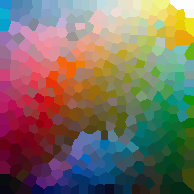Create and colour a Penrose tiling
Calculator
This calculator can help you work out the size of tiles you need for a Penrose tiling project. When tiling, you normally leave a gap between the tiles. You need to take account of the gap to get the perfect tile sizes. This calculator does the maths for you. Set the side length you want on your 72 degree tile (all sides are the same length on a Penrose tile), set the gap size, and the calculator will do the rest. The 36 degree tiles will have slightly shorter sides because the gap affects them more.
| measurement | 72° tile | 72° with gap | 36° tile | 36° with gap |
|---|---|---|---|---|
| Side | 0 | 0 | 0 | 0 |
| Edge to Edge | 0 | 0 | 0 | 0 |
| Overhang | 0 | 0 | 0 | 0 |
| Side + Overhang | 0 | 0 | 0 | 0 |
| Long Diagonal | 0 | 0 | 0 | 0 |
| Short Diagonal | 0 | 0 | 0 | 0 |
| Area | 0 | 0 | 0 | 0 |
How
- Click the green and red circles to expand the pattern with either thick or thin tiles.
- Use the + and - buttons to zoom in or out.
- Switch between the add/move, paint and fill tools to change between growing or colouring the pattern.
- Change the default colour for thin or thick tiles.
What
Penrose tiling is a non-periodic tiling pattern, the pattern never repeats regularly. It is made from thick and thin rhombus shaped tiles, which have to be placed according to strict rules. This program automatically adds the correct tiles when there is no choice, but allows you to take choices when possible. You can construct some wonderful patterns with pentagonal symmetry, which come to life when you colour them. The patterns get very big very quickly - zoom out to watch it growing.
Sometimes you will be given choices which turn out to be bad, they will prevent further expansion of the pattern. The program uses limited lookahead to try to avoid these, but when one happens, it will cancel your current expansion and prevent it from happening again. If you're very cunning and persistant, it may still be possible to create tilings which break the rules.
Why
I was redesigning my bathroom. Rather than having a regular, normal tiling pattern on the walls, I thought it would be wonderful to have something more mathematically interesting. Since I couldn't find any Penrose tiling generators on the web, I built my own.
This program can make SVG images of your pattern. These don't lose detail as you zoom in and out, so they are great for design work. You can print or save these for a permanent record of your pattern. If you print one where all the colours are set to white, it could be fun for kids to colour it by hand.
Here's the result!


